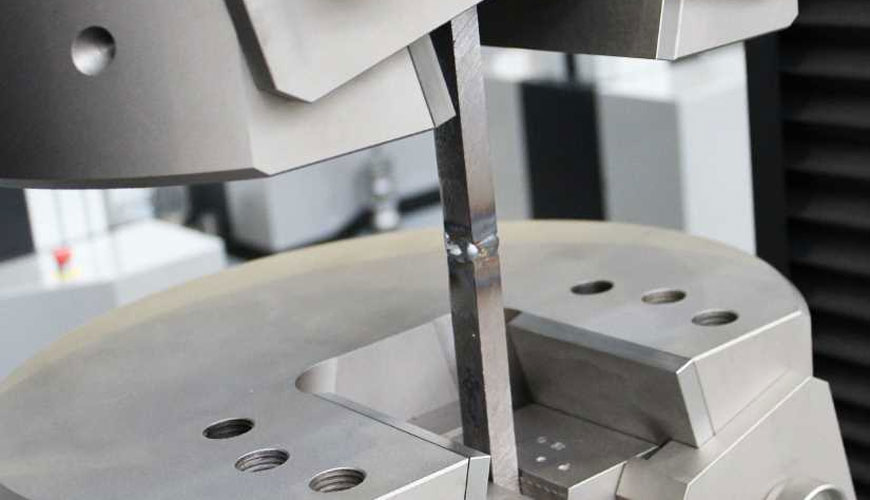

EUROLAB laboratory provides testing and compliance services within the scope of ASTM E8 standard. ASTM E8 standard, tensile testing is performed on metallic materials of any shape at room temperature. Specifically, it determines the properties of metals such as yield strength, yield point elongation, tensile strength, elongation, and area reduction. It is one of the most common testing procedures performed on metal samples.

In ASTM E8, plate type specimens, round specimens, plate, strip, flat wire and plate specimens, wire, rod and bar specimens, rectangular specimens specimens for rod, pipe and tube, forged specimens, cast specimens, malleable iron specimen, press Various different sample types are referenced, such as casting samples and powder metallurgy samples.
Metal fabrication requires confidence that your incoming raw materials and outgoing product have the appropriate strength and ductility needed to produce products that meet your advertised competitive specifications.
You need accurate, repeatable data you can trust for Ultimate Tensile Strength (UTS), Percent Elongation, Offset Yield Strength and Modulus of Elasticity (Young's Modulus). A robust, reliable, low-maintenance testing system that consistently delivers the stress-strain properties you need will go a long way in providing comfort and efficiency in your production processes.
ASTM E8 Test Procedure
Sample dimensions are measured and documented to determine the cross-sectional area of the smallest spot. The original cross-sectional area is used for stress calculations. If the extensometer is not used, measure marks of appropriate gauge length are placed on the test specimens. After the specimen has broken, the distance between the gauge marks is used to determine the percent elongation at the fracture point. The measurement lengths must be the same.
The test machine is reset. The sample is placed in holders. If an extensometer is used, the extensometer is attached to the sample and sample loading begins. The test is run until the sample fails or breaks.
The broken sample is removed. If an extensometer is used, the software will automatically calculate elongation, yield and modulus data. If an extensometer is not used, the broken ends are snapped together and the distance between gauge marks is measured to the nearest 0,05 mm (0,002 inch).
Values stated in SI units should be considered separately from inch/pound units. The values specified in each system are not exactly equivalent; therefore each system should be used independently of the other.
This standard does not purport to address all, if any, safety concerns associated with its use. It is the responsibility of the user of this standard to establish appropriate safety, health and environmental practices and to determine the applicability of regulatory restrictions prior to use.
Our organization, EUROLAB, provides tension testing services of metallic materials within the framework of national and international standards, with its trained and expert staff and advanced technological equipment, among numerous test, measurement, analysis and evaluation studies. Provides testing services within the scope of ASTM E8 standard.
To get an appointment, to get more detailed information or to request an evaluation, you can ask us to fill in our form and reach you.